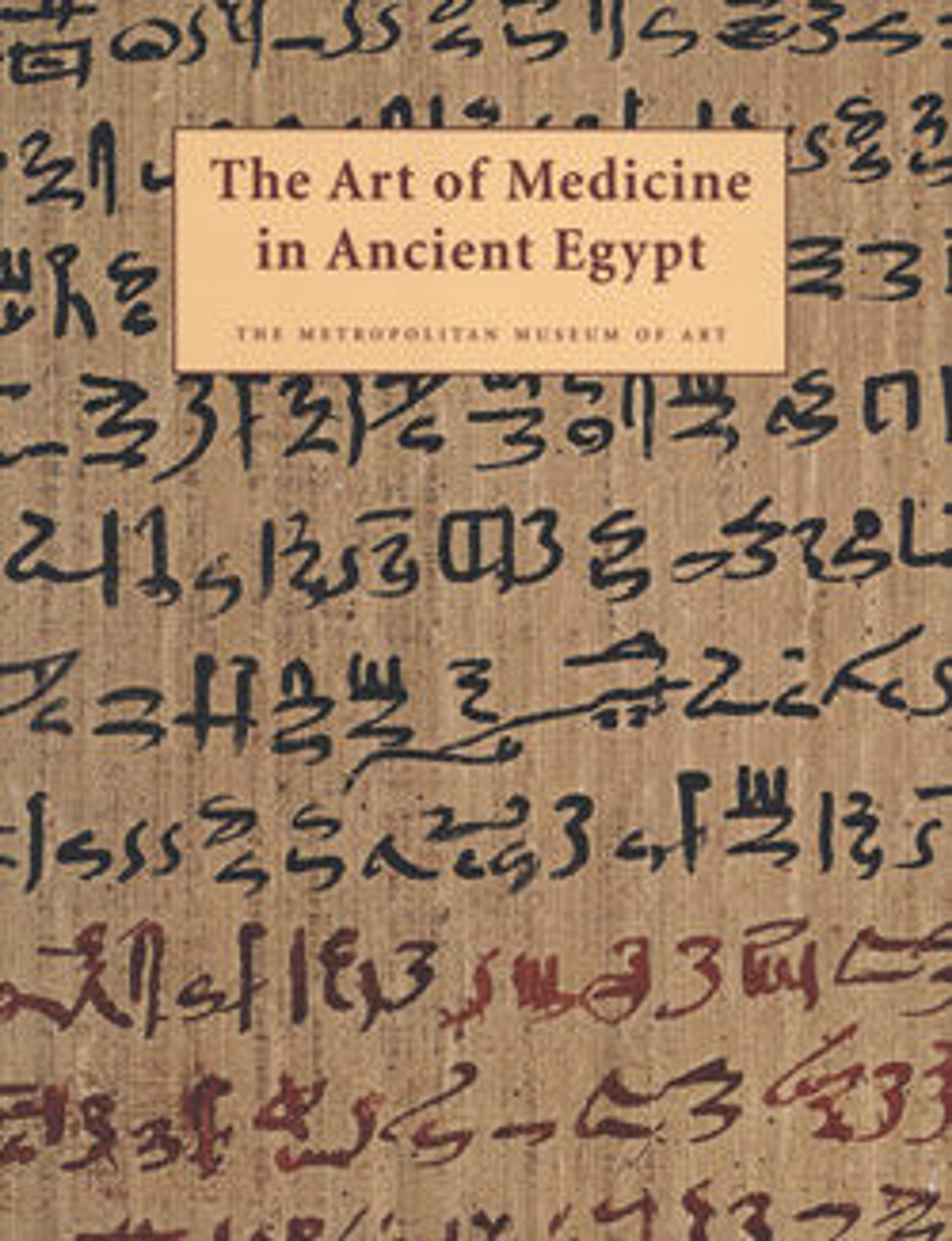Statue of the Goddess Sakhmet
The goddess Sakhmet, whose lioness head with its small intense eyes and prominent sinewy jaws bespeaks her potential for violence, elicited great efforts of appeasement. This is one of some six hundred statues of the goddess created during the reign of Amenhotep III that either still stand in, or can be traced to, two main locales: the mortuary complex of the king at Kom el Heitan on the Theban west bank, and the Mut Temple Complex at Karnak on the east bank at Thebes. This statue was most likely found at the latter site.
It was long thought that the king himself had erected statues in both places, but today many scholars believe that originally the statues all stood at the Kom el Heitan mortuary temple. There they formed part of Amenhotep’s massive statuary program. The Sakhmet statues have convincingly been shown to have constituted a "litany in stone" that appeased the goddess and invoked her not to use her negative powers, thereby delivering the king from illness and evil for a year. Based on our understanding of the litany, there may originally have been 730 statues, one seated and one standing for each day of the year. Moreover, it has been theorized they were arranged, along with other divine statues, across the giant courts at Kom el Heitan to form a vast celestial map that served as the king's eternal ritual calendar.
The mortuary temple of Amenhotep III apparently began to suffer from rising groundwater not long after its construction, and statues and building materials within its precinct were removed to other sites. Many of the statues of Sakhmet thus had a second stage of life after their original deployment. The violent and powerful goddess was linked with the goddess Mut, wife of Amun, who was worshipped in the Precinct of Mut south of Karnak temple. Statues of Sakhmet had probably already begun to be moved to the Mut temple complex by the Nineteenth Dynasty as the two goddesses became more closely identified, and then a number of Sakhmet statues at the complex bear added names indicating the attention of rulers of the Third Intermediate Period, when alternately fierce and gentle goddesses with lion aspects, including Sakhmet and Mut, acquired great religious influence.
It was long thought that the king himself had erected statues in both places, but today many scholars believe that originally the statues all stood at the Kom el Heitan mortuary temple. There they formed part of Amenhotep’s massive statuary program. The Sakhmet statues have convincingly been shown to have constituted a "litany in stone" that appeased the goddess and invoked her not to use her negative powers, thereby delivering the king from illness and evil for a year. Based on our understanding of the litany, there may originally have been 730 statues, one seated and one standing for each day of the year. Moreover, it has been theorized they were arranged, along with other divine statues, across the giant courts at Kom el Heitan to form a vast celestial map that served as the king's eternal ritual calendar.
The mortuary temple of Amenhotep III apparently began to suffer from rising groundwater not long after its construction, and statues and building materials within its precinct were removed to other sites. Many of the statues of Sakhmet thus had a second stage of life after their original deployment. The violent and powerful goddess was linked with the goddess Mut, wife of Amun, who was worshipped in the Precinct of Mut south of Karnak temple. Statues of Sakhmet had probably already begun to be moved to the Mut temple complex by the Nineteenth Dynasty as the two goddesses became more closely identified, and then a number of Sakhmet statues at the complex bear added names indicating the attention of rulers of the Third Intermediate Period, when alternately fierce and gentle goddesses with lion aspects, including Sakhmet and Mut, acquired great religious influence.
Artwork Details
- Title:Statue of the Goddess Sakhmet
- Period:New Kingdom
- Dynasty:Dynasty 18
- Reign:reign of Amenhotep III
- Date:ca. 1390–1352 B.C.
- Geography:From Egypt, Upper Egypt, Thebes, Karnak
- Medium:Granodiorite
- Dimensions:h. 210 cm (82 11/16 in); w. of base 47.5 cm (18 11/16 in); d. 95.5 cm (37 5/8 in)
- Credit Line:Gift of Henry Walters, 1915
- Object Number:15.8.2
- Curatorial Department: Egyptian Art
Audio
Solo disponible en: English
3274. Statue of the Goddess Sakhmet
0:00
0:00
We're sorry, the transcript for this audio track is not available at this time. Please email info@metmuseum.org to request a transcript for this track.
More Artwork
Research Resources
The Met provides unparalleled resources for research and welcomes an international community of students and scholars. The Met's Open Access API is where creators and researchers can connect to the The Met collection. Open Access data and public domain images are available for unrestricted commercial and noncommercial use without permission or fee.
To request images under copyright and other restrictions, please use this Image Request form.
Feedback
We continue to research and examine historical and cultural context for objects in The Met collection. If you have comments or questions about this object record, please contact us using the form below. The Museum looks forward to receiving your comments.
